#beruit
Text

garnet & gold finger rings, found in beirut lebanon, made in egypt, 200-100 b.c.
british museum. 1917,0501.770
#ancient egypt#egypt#roman egypt#greco roman egypt#greco egypt#lebanon#beruit#eastern mediterranean#jewellery
116 notes
·
View notes
Text

Ahmad from Beruit
9 notes
·
View notes
Text
Let's play, "which political and militant groups have the same graphic designer?"
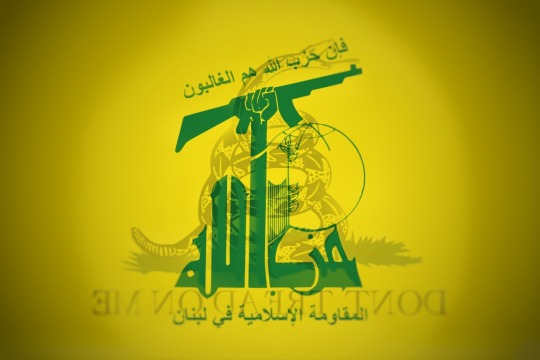
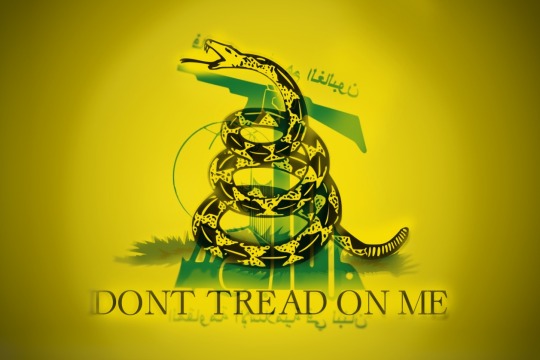
"I said, 'Wait a minute. You know, Hezbollah is very smart.' They're all very smart!" -- Donaldt Rump 2023



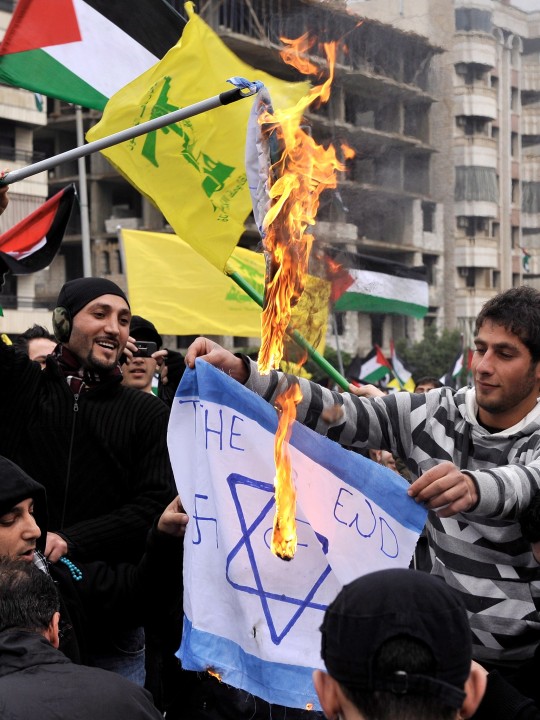
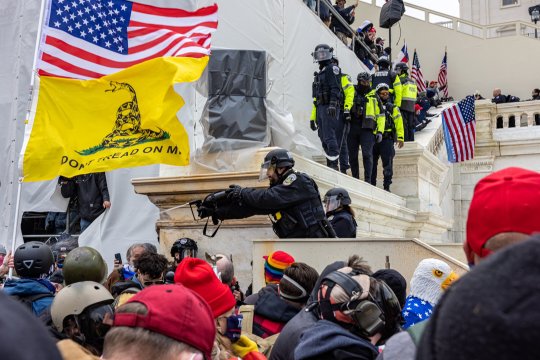
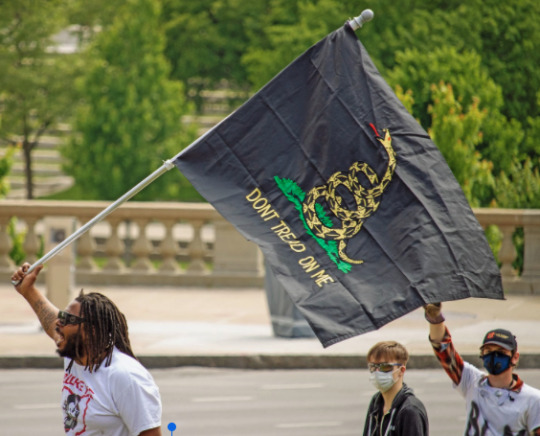


FYI.
(intend to do one on the "XX State of Jefferson" and Hamas in Gaza -- another example of being the exact. Same. Thing.)
#domestic terrorism#hezbollah#gadston flag#Lebanon#literally hold up a mirror to those fucks#exact same thing?#:-(#you won't hear anyone in one group denounce the other#←#🇵🇸#🇮🇱#terrorist attack#Lebanon is actually a nice country#beruit#🇱🇧
3 notes
·
View notes
Text
In her lecture, Imagining Communities through Architecture: The Mediterranean Sea as a Constellation, Anissa Touati will present three projects that bring together art and architecture united by the Mediterranean Sea as a coherent site of imagination, collective future and interconnectedness:
1. Cycles of Collapsing Progress, an exhibition held at the Oscar Niemeyer-designed Unesco World Heritage Site in Tripoli, Lebanon.
2. Warché, a show at the Thalie Foundation in Brussels that links the history of Beirut with the sunken Roman city of Baiae (Italy) and the geometrical architecture of the Arab world through an original installation by architect Lina Gothmeh.
3. Mare a Mare, a refuge for a Mediterranean nation, designed with architect Meriem Chabani for the Lagos Biennale in Nigeria. This pavilion refers to a transnational shelter where differences cohabit, exceeding national identities, borders, and hierarchies: a breeding ground for future intersections.
Taking this intercontinental Basin as a key site for the exchange of ideas, these three proposals reconfigure the Mediterranean as a constellation, both imaginary and real.
#contemporary art#MIT#installation#mediterranean#architecture#lebanon#beruit#tripoli#Anissa Touati#constellation
1 note
·
View note
Video
youtube
Yara Asmar - synth waltzes and accordion laments
https://yaraasmar.bandcamp.com/album/synth-waltzes-and-accordion-laments
0 notes
Text
Beirut - Nantes | A Take Away Show
youtube
Because these guys are amazing
0 notes
Text
I’m back from the ether to say it again!!
Ceasefire for Palestine! Freedom for Palestine! 🇵🇸
In light of the Oscars last night and the protest that occurred and with only Mark Ruffalo being featured showing verbal support, I have to write about this again.
I weep for Palestine. I weep for my teacher, who has lost contact with his family and friends in Palestine. I weep for the people of the land. I weep for Beruit and Damascus. I weep for myself because I can do so little.
For those of you, who feel like there’s is nothing left you can do; who feel exhausted thinking about this every single day but you live on the opposite side of the world, I hear you. I understand you, but we cannot turn away now. It’s too late to avert our eyes and hurry our heads in the sand.
For as much I hurt and for as tired as I am, I will never be as hurt and tired as those who are suffering. And for that I must push foreword. We cannot turn away, not now, not ever.
I will remember what happened to Palestine. The world shall remember and Israel will not be forgiven by the people.
I cannot pray because I see no kind God amongst us, but I will hope for the future. I demand a ceasefire and repatriation for Palestine.
Americans, contact your representatives and demand a ceasefire. We cannot allow our geriatric governmental bodies to ignore us.
Stand tall, fight and remember Palestine.
#cherryblossom chopper#from the river to the sea palestine will be free#free palestine#free gaza#ceasefire
19 notes
·
View notes
Text
Man I'm convinced it was Silvio who built Al Ba'sa, the infamous spite house or "the Grudge" in Arabic, in Beruit
The whole thing started from a brotherly dispute and ended in one of them building a paper-thin house so that the other brother couldn’t see the spectacular sea view, also causing the property values to sink as collateral damage.

35 notes
·
View notes
Photo

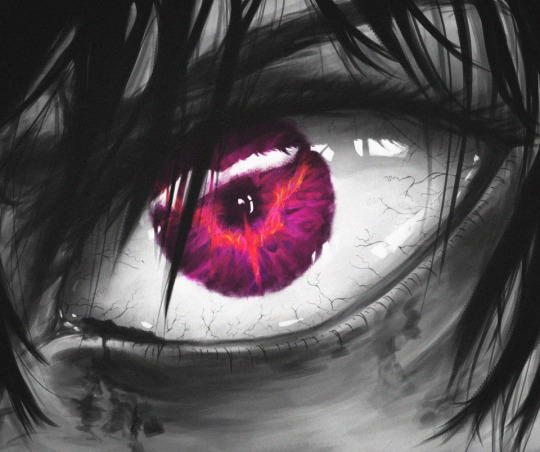
My one desire, all I aspire
Is in your eyes forever to live
Traveled all over, the seven oceans
There is nothing that I wouldn't give
Came from Bahrein, gone to Beruit
Looking for someone comparing to you
Tearing down windows and doors
And I could not find eyes like yours
(No seriously, I didn't find eyes like Lelouch's. No one has violet eyes or Geass.If you got the reference, I'll give you a cookie)
#lelouch vi britannia#lelouch#lelouch lamperouge#code geass#code geass: lelouch of the rebellion#code geass: hangyaku no lelouch
73 notes
·
View notes
Text
Saints&Reading: Sunday , March 3, 2024
february 19_march3
Sunday of the Prodigal Son.

Kontakion:Having foolishly abandoned Thy paternal glory, I have squandered on vices the wealth Thou gavest me. Therefore I cry to Thee, O compassionate Father, receive me who repent, and treat me as one of Thy hired servants.
VENERABLE DOSITHEUS OF PALESTINE (6th.c.), DISCIPLE OF St ABBA DOROTHEUS
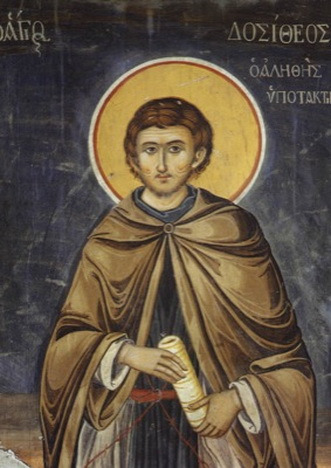
Saint Dositheus, a disciple of Saint Abba Dorotheus (June 5), lived during the sixth-seventh centuries, and was raised in a rich and renowned family. Young Dositheus listened to tales of the holy city of Jerusalem from the servants of his grandfather, a military commander, and this kindled within him the desire to go there. Soon his wish came true.
At Gethsemane, he gazed for a long time at a picture of the Dread Last judgment. Suddenly he saw beside him a woman, who explained to him what was depicted in the image. The youth asked, “How is it possible to avoid the eternal torments?”
She replied, “Fast, do not eat meat, and pray constantly to God.” After this, his strange guide suddenly became invisible. She who conversed with him had been the Most Holy Theotokos. The appearance of the Mother of God produced a strong impression on the youth, and he decided to enter a monastery headed by Abba Seridus (August 13), and populated by such great ascetics as Saints Barsanuphius (February 6) and John (June 19).
Dositheus, asking to be accepted among the brethren, was sent to the Elder Dorotheus. Saint Dositheus fulfilled his obedience in the monastery infirmary, caring for all the sick. Saint Dorotheus trained his disciple in abstinence and fasting, gradually decreasing the quantity of food he consumed each day.
He also weaned the youth from vexation and anger, by constantly reminding him that every unkind word said to a sick person, is said to Jesus Christ Himself. By revealing his thoughts to the Elder and through unhesitating obedience, Saint Dositheus liberated his soul from passions. After five years of tending the sick and obeying his Elder, Saint Dositheus fell into serious sickness. Patiently enduring his sufferings, he prayed constantly and never complained.
Not long before his death he asked a message be sent to Saint Barsanuphius: “Father, grant me pardon, I cannot live much longer.” He replied, “Have patience, my son, for the mercy of God is near.” After several days Saint Dositheus again sent this message to the Elder: “My master, I cannot live any longer.” Then Saint Barsanuphius blessed him to depart to God, and he asked the dying one to pray for all the brethren when he stood before the Holy Trinity.
The brethren were astonished that the great Abba Barsanuphius would ask the prayers of a monk who had lived at the monastery for only five years without any great ascetic accomplishments (they had not seen his vigils and his abstinence). But after the death of the young monk, a certain experienced ascetic was praying that the final resting place of the departed fathers of the monastery might be revealed to him, and in a dream he saw young Dositheus among these saints. Saint Dositheus was given great glory in the Kingdom of Heaven for his perfect obedience to his Elder and for cutting off his own will.
In Greek usage, both Saints are commemorated on August 13.
VENERABLE RABULA MONK OF SAMOSATA ( 530)
Saint Rabulas was born in the Syrian city of Samosata and he received an excellent education. While still young, he became a monk and struggled in the deserts and on the mountains, following the example of the holy Prophet Elias (July 20) and Saint John the Baptist of the Lord (January 7, February 24, May 25, June 24, August 29, September 23, October 12).
Somewhat later, Saint Rabulas went to Phoenicia, where for a long while he lived in asceticism and was glorified by spiritual gifts. The emperor Zeno gave Saint Rabulas monetary help to build a monastery, built with the assistance of Bishop John of Beruit.
Around the new monastery lived many pagans, who were gradually converted to Christianity through the efforts of the monks. Under Xeno’s successor Anastasius (491-518), Saint Rabulas came to Constantinople, and having received financial help from the emperor, he built several more monasteries in various places. One of them was named after the holy ascetic.
Saint Rabulas spent all his life at work, and he was gentle and kind and well-disposed towards people. He was also a man of great prayer. He lived to be eighty, and before his death he heard a voice: “Come unto Me all ye who labor and are heavy laden” (Mt. 11:28).
Saint Rabulas fell asleep in the Lord around the year 530 after a short illness.
Source: Orthodox Church in America_OCA
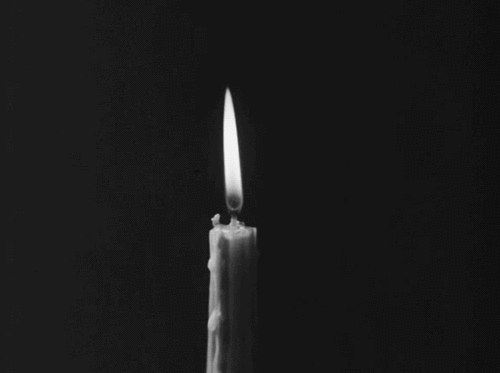

1 CORINTHIANS 6:12-20
12 All things are lawful for me, but all things are not helpful. All things are lawful for me, but I will not be brought under the power of any. 13 Foods for the stomach and the stomach for foods, but God will destroy both it and them. Now the body is not for sexual immorality but for the Lord, and the Lord is for the body. 14 And God both raised up the Lord and will also raise us up by His power. 15 Do you not know that your bodies are members of Christ? Shall I then take the members of Christ and make them members of a harlot? Certainly not! 16 Or do you not know that he who is joined to a harlot is one body with her? For "the two," He says, "shall become one flesh." 17 But he who is joined to the Lord is one spirit with Him. 18 Flee sexual immorality. Every sin that a man does is outside the body, but he who commits sexual immorality sins against his own body. 19 Or do you not know that your body is the temple of the Holy Spirit who is in you, whom you have from God, and you are not your own? 20 For you were bought at a price; therefore glorify God in your body and in your spirit, which are God's.
LUKE 15:11-32 (Prodigal)
11 Then He said: "A certain man had two sons. 12 And the younger of them said to his father, 'Father, give me the portion of goods that falls to me.' So he divided to them his livelihood. 13 And not many days after, the younger son gathered all together, journeyed to a far country, and there wasted his possessions with prodigal living. 14 But when he had spent all, there arose a severe famine in that land, and he began to be in want. 15 Then he went and joined himself to a citizen of that country, and he sent him into his fields to feed swine. 16 And he would gladly have filled his stomach with the pods that the swine ate, and no one gave him anything. 17 But when he came to himself, he said, 'How many of my father's hired servants have bread enough and to spare, and I perish with hunger! 18 'I will arise and go to my father, and will say to him, "Father, I have sinned against heaven and before you, 19 and I am no longer worthy to be called your son. Make me like one of your hired servants. ' 20 And he arose and came to his father. But when he was still a great way off, his father saw him and had compassion, and ran and fell on his neck and kissed him. 21 And the son said to him, 'Father, I have sinned against heaven and in your sight, and am no longer worthy to be called your son.' 22 But the father said to his servants, 'Bring out the best robe and put it on him, and put a ring on his hand and sandals on his feet. 23 'And bring the fatted calf here and kill it, and let us eat and be merry; 24 'for this my son was dead and is alive again; he was lost and is found.' And they began to be merry. 25 Now his older son was in the field. And as he came and drew near to the house, he heard music and dancing. 26 So he called one of the servants and asked what these things meant. 27 And he said to him, 'Your brother has come, and because he has received him safe and sound, your father has killed the fatted calf.' 28 But he was angry and would not go in. Therefore his father came out and pleaded with him. 29 So he answered and said to his father, 'Lo, these many years I have been serving you; I never transgressed your commandment at any time; and yet you never gave me a young goat, that I might make merry with my friends. 30 But as soon as this son of yours came, who has devoured your livelihood with harlots, you killed the fatted calf for him.' 31 And he said to him, 'Son, you are always with me, and all that I have is yours. 32 'It was right that we should make merry and be glad, for your brother was dead and is alive again, and was lost and is found.' "
#orthodoxy#orthodoxchristianity#easternorthodoxchurch#originofchristianity#spirituality#holyscriptures#gospel#bible#wisdom#saints
4 notes
·
View notes
Note
hi😁 your art is so good, youre seriously so talented i always get so happy when you post!! i was just wondering, in tsc its said that laila is from beirut, do they also have the same kinda inuit tattoos over there that you gave her in your latest art? genuine question!
correct laila is said to have family in beruit! personally i have HC laila dermott as inuk since reading TKM, the vibes were all there plus my friends mother has that surname too so i did a cheeky representation for my inuk girlies. i honestly didn’t think we’d get more laila content but alas secrets were unveiled so im now HC her as mixed alaskan inuk/lebanese.
and no! this is kakiniit that is found in a lot of inuit and yupik cultures
hope this makes sense 😼👍
#if y’all have any further questions my dms are open!#inuk laila is my lifeblood#laila dermott#the sunshine court
6 notes
·
View notes
Text
Playlist for Saturday, February 24, 2024
Katy Kirby - "Cubic Zirconia"
Eliza McLamb - "Glitter"
Vacations - "Next Exit"
Laura Early - "Just Tell Me"
Northstar - "Pollyanna"
Hot Rod Circuit - "The Power of the Vitamins"
Glassjaw - "When One Eight Becomes Two Zeros"
Ty Segall - "Eggman"
Teethe - "Face First"
Laura Jane Grace - "Give Up the Ghost"
The Fire Theft - "Chain"
Dinosaur Jr. - "Crumble"
Band of Horses - "I Go to the Barn Because I Like The"
The Gaslight Anthem - "'45'"
Sleater-Kinney - 'Say it Like You Mean It"
Beruit - "Regulatory"
Crystal Canyon - "Cobra Aurora"
Bombay Bicycle Club - "Turn the World On"
Cage the Elephant - "Back Against the Wall"
Yeah Yeah Yeahs - "Y Control"
Incubus - "Blood on the Ground"
the Smile - "I Quit"
Lime Garden - "Popstar"
Declan McKenna - "Sympathy"
The Haden Triplets - "Lonesome Night"
Frank Fairfield - "Devil's Dream Medley"
xo
- b.
To download or stream the show, click here!
2 notes
·
View notes
Note
https://www.tiktok.com/t/ZT81WmNur/
a gift! i forgot Oscar Isaac has said some wild shit (this is from his reading of Beruit with Marisa Tomei, a raunchy apocalyptic play 😝)
GOD I RMBR THIS HE’S SO UNSERIOUS 😭😭
4 notes
·
View notes
Text
A great warrior
By Anwar Syed
Salahuddin, known to Christendom as the great and chivalrous Saladin, was born to an influential Kurdish family in northern Iraq in 1138. His father, Najmuddin Ayyub, was governor of Baalbek at the time, and his uncle, Asaduddin Shirkoh, served as a general in the Syrian army. Salahuddin was still a child when his father sent him to Damascus, where he read theology, and learned the arts of warfare. He gained military experience under his uncle’s command in campaigns against the “Frankish” (European crusaders’) ruling houses in several towns in Syria and Palestine.
He rose to eminence during Shirkoh’s campaigns to Egypt that Nuruddin, the sultan of Damascus, had commissioned. These campaigns were intended to thwart the designs of the covetous Frankish king of Jerusalem upon that land. Strangely enough, as Shirkoh’s forces approached Cairo on January 2, 1169, the Frankish army, which had been besieging the city, retreated. Sixteen days later, Salahuddin ambushed and killed the chief Fatimid vizier, Shawar, whereupon Shirkoh entered the city and assumed the office of vizier. He died unexpectedly two months later (March 23, 1169), and Salahuddin at the age of 30 succeeded him as the vizier and virtual ruler of Egypt. Officially, however, he ruled as an agent of Sultan Nuruddin, who in turn professed allegiance to the Abbasid caliph in Baghdad.
Nuruddin wanted Salahuddin to terminate the Shia Fatimid caliphate in Egypt forthwith. Knowing that the young caliph (Al Adid) was not only powerless but terminally ill, he withheld action until the latter’s death on September 12, 1171. He then instructed the imams to bless the Abbasid caliph, instead of the Fatimid, in their Friday sermons. The Fatimid caliphate thus came to an end without bloodshed.
Even though his relationship with Nuruddin had become tense as a result of his “insubordination” in the matter of the Fatimid caliphate, Salahuddin did not proclaim himself the sultan of Egypt until after Nuruddin’s death on March 25, 1174. Nor, until then, did he move out of Egypt to subdue smaller Muslim principalities. He went some distance in the Maghreb (along the North African coast), and to the east to conquer Yemen.
Nuruddin’s heir, Ismail al-Malik, in Damascus was a mere boy controlled by a bunch of eunuchs in the palace. Salahuddin was well received when he entered the city and became the sultan of Damascus. Popular approval might have been taken as sufficient evidence of his legitimacy, but he chose to firm it up further by marrying Nuruddin’s widow. Within a few years he brought nearly all of Syria and parts of northern Iraq under his dominion, partly by skillful diplomacy and, when necessary, by swift and resolute use of force.
Salahuddin engaged the crusader in numerous battles most of which he won. He lost the Battle of Montgisard (November 25, 1177) in which he had to face the combined forces of Baldwin IV of Jerusalem, Raynald of Chattilon, and the Knights Templars. Two years later he attacked the crusaders again and defeated them at Jacob’s Ford. But they continued to provoke him.
Raynald harassed Muslim trading caravans and pilgrims. Worse still, he threatened to invade Makkah and Madina. He looted a caravan of Muslim pilgrims in 1184. On July 4, 1187, Salahuddin met and annihilated the forces of Guy of Lusignan, king-consort of Jerusalem, Raymond III of Tripoli, and Raynald in the Battle of Hattin (near Tiberias in northern Palestine). Raynald was captured and executed; Guy, too, was taken, but his life was spared. This was a terrible defeat from which the crusaders never recovered. Most of the towns under their rule (Acre, Toron, Beruit, Sidon, Nazareth, Nabulus, Caesaria, Jaffa, and Ascalon) fell to Saladin within the next three months.
When the crusaders first conquered Jerusalem in 1099, they slaughtered every Muslim and Jewish man, woman, and child in sight. By contrast Salauddin, upon taking the city on October 2, 1187, announced a general amnesty, ordered his soldiers not to hurt or harass any resident, assured those who wanted to leave safe passage and time to pack their belongings and take along with them all that they or their mules could carry.
The fall of Jerusalem to Salahuddin, and the crusaders’ successive defeats, shocked religious and political circles in Europe and prompted a third crusade in 1190 under the joint leadership of Richard I (the “Lionheart”), of England, and the kings of France and Austria. The Austrian king died on the way, and the French king went back home after a short stay in Palestine, leaving it to Richard to deal with Salahuddin. They met at the battle of Arsuf (September 17, 1191), which Richard won but not decisively. On his way to Jerusalem in June 1192, he became too sick and tired to continue, and made peace with Salahuddin (Treaty of Ramla), providing that Jerusalem would remain under Muslim control, but that it would be open to Christian pilgrims to visit freely. Soon thereafter, Richard left Palestine.
It is said that Richard was greatly impressed by Salahuddin’s generosity of spirit. Once when he was sick with fever, Salahuddin offered to send his personal physician to examine and treat him. On another occasion, Richard lost his horse, and Salahuddin sent him two of his own. When, on his way to Jerusalem, his men were without fresh water and extremely thirsty, Richard appealed to Salahuddin for supplies of fruit and water, which the latter sent.
Sir Walter Scott’s work, “Talisman,” depicts Salahuddin in Richard’s tent in the garb of a physician. So do legend and fable. Actually the two men had never met. Richard wanted a “summit” meeting, and sent a delegation of his knights to propose one, but Salahuddin declined. He asked the knights to tell Richard that they would meet only if and when one of them appeared before the other as a captive.
In terms of personal qualifications, Salahuddin is said to have been rather short, light brown of skin, slight of build, slim and frail, with piercing brown eyes and a pointed black beard. Beyond physical appearance, he was gentle, kind, merciful, and generous; tolerant and forgiving, courteous but firm; hardheaded, prudent, patient and persevering; courageous and chivalrous; competent planner and strategist.
He was a keeper of his covenants, and straightforward in that he said what he meant and meant what he said. He was pious and, according in some vesions, he may have damaged his health by excessive fasting. He was strictly honest; huge amounts of public revenues remained at his disposal but he took none of them. He gave away to the poor and the needy much of any salary that he may have drawn. His family and friends found upon his death that his “treasury” (more like a small cash box) contained no more than one gold piece, which would not be enough to meet his funeral expenses.
It appears that he did not care much for hierarchical distinctions. His subjects were free to sue him. He would not tolerate cruelty on the part of his functionaries, and forbade beating of servants. He banned exclusive enclaves or mansions for the wealthy in Cairo. He made it a thriving city in which commerce and cultural freedom flourished. He tended to treat his subordinates with respect and as near equals.
It has been reported that his secretary was once riding alongside him, and as they came to a muddy patch, his mule splashed mud on Salahuddin’s garment. He pulled back to ride behind the Sultan to avoid his mule’s mud-slinging. The Sultan is said to have laughed and told his secretary to ride alongside, not behind, him, for a bit of mud would not hurt him any.
One afternoon Salahuddin was resting in the opening of his tent when a servant brought him a document to sign. He told the servant to bring it back later because he was extremely tired at that time. The servant said the matter would brook no delay, and that he must sign the paper right away. Salahuddin then pleaded that he did not have an inkwell on hand. The servant retorted that an inkwell sat on a table at the back of the tent, implying that not he but the sultan himself should get up and fetch it. Believe it or not, that is exactly what the sultan did, and the servant got away with behaviour that in most quarters would have been regarded as gross and intolerable impertinence.
Salahuddin was a friend to learning. He established six colleges (seminaries) that taught not only religion but also mathematics, physics, geodesy, medicine, and administration. He recruited professors and scholars from all over the Muslim world to teach at these institutions and to undertake scholarly writing. He built a spacious hospital in Cairo that provided clean beds, free food and medicines, and employed physicians, druggists, and other needed helpers. It maintained a separate ward for women. Next to this hospital he built a facility that cared for mentally disturbed persons, treated them in a humane fashion, and employed experts to discover what had driven the inmates to their respective states of mind.
Salahuddin was a devout Sunni Muslim, apparently of the Shafi’i persuasion. He hoped to diminish any lingering Shia influence in Egypt, left by the long Fatimid rule, not by coercing but by “re-educating” the people. To this end he brought in quite a number of appropriate preachers, and hoped to re-establish Egypt as a stronghold of Sunni Islam.
He was zealous but by no means a fanatic. In his struggle against the European invaders he had the support of eastern Christians — the Georgian orthodox and the Egyptian Copts, who preferred him to the pope in Rome.
On the negative side, it may be noted that he dismantled the elaborate bureaucracy the Fatimids had maintained, appointed fellow-Kurds to high offices, gave many of his officers control over large tracts of fertile land, and thus furthered, if not introduced, feudalism in Egypt.
He died in Damascus on March 4, 1193. He was buried in the grounds of the Umayyad mosque and his tomb remains one of the most frequently visited in the Muslim world.
The writer is professor emeritus of political science at the University of Massachusetts at Amherst, US.
Email: [email protected]
2 notes
·
View notes
Note
📖
📻
Love you, милая 🥰
Omg hello ily I hope you have a great day 🥰
📖 Fave book
Oof this is so hard LOL I think it has to be “The Truth About Forever” by Sarah Dessen
📻 Fave song currently
I’ve been super into “Elephant Gun” by Beruit lately!
4 notes
·
View notes
Text
Mini-Research Paper & Presentation
The Power of Red
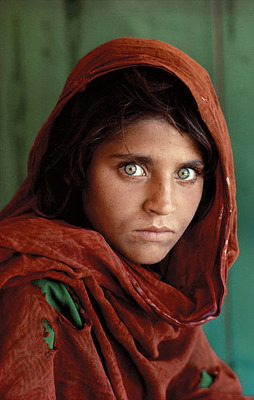

Afghan Girl (1984) Red Boy (1996)
The Nicest World There Is

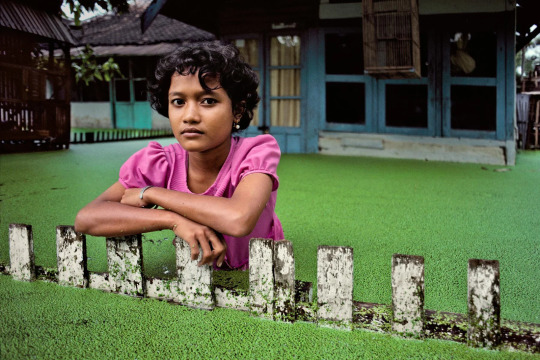
Father and Son (1980) Monsoon in Indonesia (1983)
Photographer: Steve McCurry
Website: https://www.stevemccurry.com/
https://stevemccurry.blog
Steve McCurry: The Power of Red
“Most of my photos are grounded in people, I look for the unguarded moment, the essential soul peeking out, experience etched on a person’s face” (McCurry). Steve McCurry has been photographing war and its consequences to spread awareness worldwide, taking him to battlefields in Beruit, Cambodia, Iran, Iraq, the Philippines, and Afghanistan. McCurry’s works about the war don’t cover photography of the armies, but rather the effects of war on the people and the destruction of their homes— sharing a certain beauty through the capture of colors while emphasizing the life of those who have been caught in the middle of warfare through the simplistic of just a photograph. The following is a discussion of two bodies of McCurry’s work — Afghan Girl (1984) and Red Boy (1996) — as well as the scandal regarding the exploitation, and ‘exoticism’ of non-Western cultures for the Western audience.
Photographed is Sharbat Gula, renowned as “Afghan Girl” worldwide. She became an instant icon after appearing on the cover of the June 1985 National Geographic magazine at 12 years old— becoming the model for McCurry’s most iconic portrait photograph. This photograph was shot on a Nikon FM2, 105mm f/2.5 lens with Kodachrome 64 color-slide film. The girl's unique look can only be described as haunted, penetrating, and intense. McCurry was able to seize this opportunity by following the conflict between Pakistan and the rebel-controlled areas of Afghanistan by dressing in traditional clothing with a full-grown beard, following the mujahideen as he documented the brutalities as a result of the Soviet Invasion. “I’m devastated for the people of young Afghans whose dreams have been dashed” (McCurry, theGuardian). The raw humanity captured in McCurry’s photograph captures the girl’s expression of innocence, vulnerability, and strength— allowing the audience to empathize with Gula and her people. McCurry’s technique of capturing the girl's face and headscarf, while blurring the background adds depth to the image while keeping the main focus squarely on the subject. Although one’s take on the “Afghan Girl” can vary on their perspective, background, and experiences— one can feel a range of emotions from empathy and compassion to cultural appreciation to political awareness and personal reflection.
Red Boy is yet another iconic photograph of McCurry’s, portraying a young Aghani refugee who has now been displaced in India. McCurry used the same specs as Afghan Girl, Nikon FM2, 105mm f/2.5 lens with Kodachrome 64 color-slide film. It highlights the sharpness of the boy's expression, while also putting a pause on the background. The pigmentation staining the boy's skin provokes viewers to drown in the heavy emotions of childhood, resilience, and the toll of war. Let alone, the deep testament of resilience in the face of adversity— although his face appears almost ‘bitter’, his posture offers determination and inner strength. “Red, of course, is the color of the interior of our bodies. In a way it’s inside out, red” (Anish Kapoor). Finding this quote from McCurry’s site personally, presented with this body of work— I can only find myself thinking that this quote signifies that wearing red is almost like proudly wearing your blood. Your culture. Your background.
Personally, at first glance, both photographs were so beautifully and carefully taken— leveling and identifying with their emotions, as I can only see my own family's (and people's) experiences coincide with what is happening to their people. I see resonation with my people; echoes of their struggles and experiences, and the experience of horror during displacement. However, some may have personal cultural pride as a result of looking at these photographs— perhaps specifically of Afghanistani descent, prompting them to reconnect with their culture, seeking appreciation and self-understanding.
Steve McCurry: The Nicest World There Is
“Home is the nicest world there is” (Laura Ingalls Wilder). While Steve McCurry is infamous for his (impact of) war photography, he has also captures the life of those misfortunated by tragedies in light. Despite the horrific disasters people go through worldwide, McCurry emphasizes the idea that despite how different people are across the world, we still are the same. Our intimate life highlights how we find comfort in our homes, whether that is a physical space, a person(s), or a feeling. He captures these moments through warmness in the photographs, colors that all seem to melt together while taking advantage and manipulating lighting to enhance the mood and atmosphere. His continuing use of color and light through pieces— Father and Son (1980) and Monsoon in Indonesia (1983) keeps the viewer drawn to the awe of his sense of aesthetics to create these striking photographs.
Father and Son photographs a father with weathered features looking afar while holding his resting young son to his chest. Although the background isn’t necessarily clear to the viewer, it seems it is filled with rubble as a result of the war— moving emotions through the viewer that such a paternal bond is happening in such destruction. Similar to the last two pieces, this photograph was taken in Afghanistan with a Nikon FM2 camera to capture this loving and vulnerable moment between the father and his son. Despite the desolation that surrounds them, the innocence of the son sleeping away in his father's arms, while the father looks out into the distance, resonates with the viewer’s deeper emotional level. Their state of resting on the ground and rubble behind them contextualizes the models with their environment, suggesting this feeling and understanding of instability and conflict among Afghanistani families. However, at the end of the day— this is their home. With their family. And maybe they are residing on the remains of their home within this portrait.
Photographed in Monsoon in Indonesia is a young girl, leaning against what appears to be a fence, while her childhood house seems to be in the background. It doesn’t take long until the viewer, with the context of the photograph's title, realizes that the girl is in fact standing in the results of the monsoon, with the reality of her home being flooded. The girl appears to be almost consumed by the duckweed-filled waters, as it goes past her waist, and by drawn context clues, viewers can assume that her home has been flooded as well. This photograph was too, taken on a Nikon FM2 camera to capture this moment of a girl, mourning the loss of those things obscured within the monsoon. Although the girl can be characterized as innocent, her expression also carries strength and rigorous resilience. The fact that the girl is half-submerged in the monsoon’s waters so casually, evokes this emotion of regularity and normalcy, as monsoons happen on a yearly basis. However, this is her home— where her country regularly gets monsoons during the wet season from November to March. This is her home— where she must carry on with her day-to-day life within these circumstances.
Personally, at first glance, both photographs were so heart-throbbing yet beautifully taken with the capture of the subject's faces evoking heavy emotions of bittersweetness. Even much more than the previous group of work— because although I can only see my family again, I can’t fail to think that they lost their homes and resisted holding their ground. Both, Father and Son and Monsoon in Indonesia and other pieces showcased in The Nicest World There Is show the destruction of their homes either through warfare, natural disasters, or misfortunate living circumstances. These photographs can evoke tenderness due to intimacy and a peak into a person(s) life, empathy due to the understanding of their experiences, yet also pride— bringing the audience to reflect and appreciate their own (family’s) history and blood. Very beautifully said, “A man travels the world in search of what he needs and returns home to find it” (George Edward Moore).
0 notes